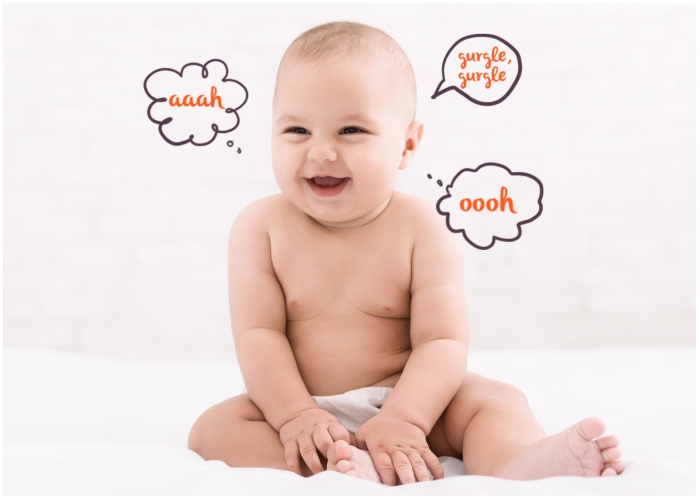Babies begin their journey towards spoken language long before they say their first recognizable word. Their early vocalizations, which start with cries and evolve into coos and babbles, are critical in the development of speech. Understanding these stages can help parents support their child’s communication skills effectively from infancy.
Understanding Babbling as a Developmental Milestone
Babbling is an essential precursor to speech, and it involves more than just making sounds. It requires the coordination of breathing, voice control, articulation, and resonance—all happening at an incredibly rapid pace. Here’s a breakdown of how babies typically progress from the initial sounds to their first words:
Birth to 2 Months: Cries and Coos
At this stage, a baby’s primary communication method is crying, which signals discomfort or need. Coos, which occur during moments of contentment or interaction, are the first delightful vocalizations that engage the vocal cords.
3 to 4 Months: Early Vocal Play
During these months, babies begin to gain control over their lips and tongue, producing simple consonant sounds like “goo.” These sounds are often directed towards parents during interactions, which can be seen as the baby’s attempt to communicate. Responding to these sounds encourages further vocal experimentation.

5 Months: Single-Syllable Sounds
By five months, babies experiment with single consonants, such as “ba,” “da,” and “ma.” This period is marked by a variety of sounds with differing pitches and volumes, as the baby explores their vocal abilities through yelling, squealing, and even blowing raspberries.
6 to 7 Months: Reduplicated Babbling
Babies begin to repeat the same sounds, such as “ba-ba” or “na-na.” This reduplicated babbling might sound like intentional words, like “mama,” but true word recognition and usage develop later. The repetition helps babies practice the sound patterns of their native language.
8 to 9 Months: Variegated Babbling
At this stage, the babbling becomes more complex, incorporating different sounds and intonations, such as “ba de da.” Babies might mimic environmental sounds or simple words they frequently hear. This is an exciting time as it showcases their growing ability to manipulate their vocal apparatus in diverse ways.
10 to 11 Months: Jargon Stage
Babies now produce a stream of babble that mimics the rhythm and cadence of real speech, often called “jargon.” This stage includes intonation patterns and may include a mixture of made-up and real words.

12 Months and Beyond: The Emergence of Words
Around their first birthday, most babies begin to use true words with purpose, like saying “mama” to call their mother. While they might have a small vocabulary of around three words, their understanding of language is much broader.
Strategies to Support Your Baby’s Speech Development
Parents play a crucial role in fostering their child’s speech development. Here are effective ways to encourage progress:
Introduce a Variety of Foods
Introducing different textures of solid foods can strengthen the oral muscles used in speech. Each new type of food challenges your baby to use their mouth in new ways, which parallels how they use their mouth to form sounds.
Minimize Pacifier Time
While pacifiers are useful for soothing, limiting their use during awake times can encourage more vocal practice by giving the baby more opportunities to babble and experiment with sounds.
Engage with Your Baby’s Sounds
Responding to your baby’s vocalizations is crucial for their speech development. Engage in “conversations” where you mimic or respond to their sounds, maintain eye contact, and introduce new sounds. This interaction not only supports language development but also strengthens your bond.
Read and Sing Regularly
Frequent reading and singing provide your baby with examples of different speech sounds and rhythms, which is fundamental for language learning. These activities also expose your baby to a variety of vocabulary and concepts.
Monitor Developmental Milestones
While each baby develops at their own pace, being aware of the typical timeline for babbling and early speech can help parents identify any potential delays. If concerns arise, a consultation with a pediatrician or a speech-language pathologist can offer reassurance or a plan for intervention.
By understanding the stages of babbling and actively supporting your baby’s vocal explorations, you contribute significantly to their ability to communicate. This early support lays the foundation for effective communication skills as they grow and start to use more words, enhancing their ability to express themselves clearly and confidently.